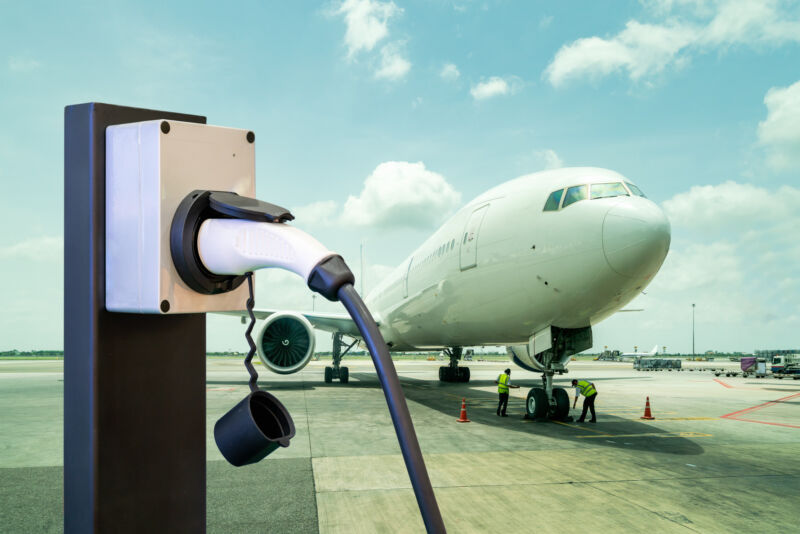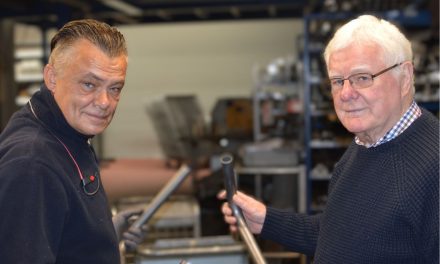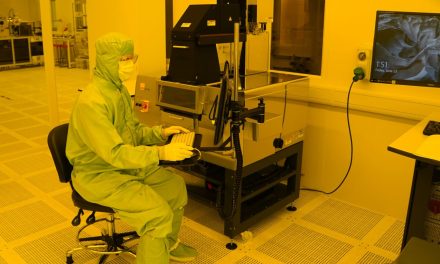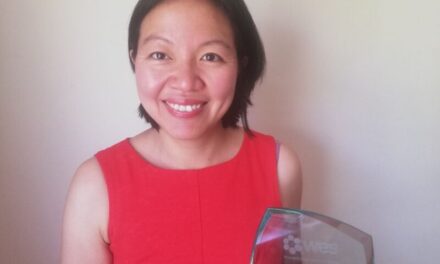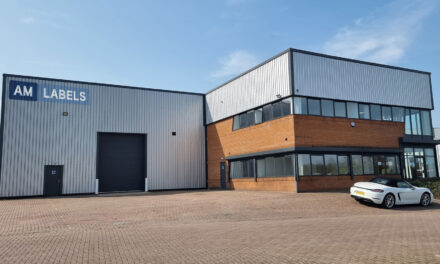As one of the largest contributors to global CO2 emissions, there’s an urgent pressure on the aerospace industry to provide greener aircraft that are lighter and can travel for longer distances. However, achieving this requires working with tough-to-machine aluminium and heat-resistant super alloys (HRSAs). Here, Sébastien Jaeger, Industry Solution Manager – Aerospace for Sandvik Coromant, explains how aerospace OEMs can adopt advanced tooling solutions to sustainably machine these tough components.
According to the World Economic Forum (WEF), “Achieving net-zero CO2 emissions by 2050 will not only help create an environmentally sustainable future, but also ensure a financially resilient and competitive aviation industry as a whole.” However, while e-mobility has become increasingly established in automotive — and August 2021 saw electric vehicle sales overtake sales of diesel in the UK — these developments will take longer to materialise in aerospace.
Generally, electrified aircraft are not expected to reach widespread use until 2035. Lonely Planet reports that — although easyJet hopes to run electric planes on routes under 311 miles (500km) by 2030 and Norway aims to make all short-haul flights electric by 2040 — “we won’t be flying long-haul on rechargeable jumbos any time soon: the batteries are simply too heavy.”
So, while batteries do need to become lighter to be plausible, there is also a growing onus on original equipment manufacturers (OEMs) to manufacture lighter components to counterbalance the problem. We can be sure that aluminium — specifically, new types of aluminium with greater strength, fatigue resistance and other attributes will be used to make these systems lighter.
We’re also seeing an increased use of new heat resistant super alloys (HRSAs) In fact, HRSAs are already used in aircraft parts that face extreme performance demands because they retain their hardness when facing intense heat. These materials properties will prove essential, as one approach to more sustainable air travel will be to burn the engines harder and hotter.
Components must also be produced to tighter tolerances and more varied designs. As with e-automobiles, tomorrow’s electrified aircraft designs — including the airframes and the engines — will vary more from manufacturer to manufacturer than existing internal combustion-engined craft. For the airframe, some OEMs are exploring delta shape, blended wing body and strut braced wing concepts. Other OEMs are sticking to traditional ‘big tube, wings and an engine’ designs.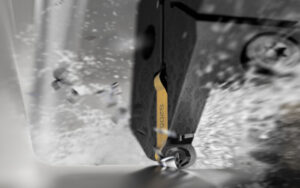
There will also be different forms of engine architecture like electrified, battery-driven or electromagnetic, or hybrid engines where current engines are assisted by electric power motors. OEMs will be required to produce an increasing variety of components to tight tolerances while also finding new ways to reduce noise, weight and emissions — all factors that influence how electric systems perform. But aluminium and HRSA components are difficult to machine, so achieving this sustainably and cost-effectively will be a challenge.
Rapid progress
One path to producing lighter and more fuel-efficient aircraft is through additive manufacturing (AM) techniques. AM allows the development of very complex-shaped customized parts and functional products to tight-tolerances, so difficult-to-machine parts like lattices can be machined more easily. According to findings by the software company Dassault Systemes, “in the aerospace sector, weight reduction from AM processes can result in energy savings of up to 25 per cent,” while “ each kilogram (2.2 lbs) of weight loss on a flight can save up to US$3,000 in fuel annually.”
But is AM manufacturing itself sustainable? A study, co-authored by the Department of Manufacturing Engineering at Romania’s Technical University of Cluj-Napoca, describes AM is “a great alternative to Traditional Manufacturing (TM) methods like injection molding, die-casting or machining.” It continues: “AM has the potential to lower costs and to be more energy-efficient than conventional processes.”
AM will also have a crucial effect on the manner and diversity of how products are manufactured. Advantages can include reduced carbon emissions, less material usage and less transportation because parts can instead be made in-house instead of imported.
Manufacturers can also produce more complex, compact and innovative aerospace parts through rapid prototyping. Rapid prototyping refers to several different techniques, but the goal is to quickly produce a tangible 3D prototype from a computer aided design (CAD) file. With these prototypes, small volume trials of new materials can be performed before full-scale manufacturing to ensure components are made with the utmost innovation, quality and precision.
We’ve looked at how aerospace OEMs can adopt new methods to produce more complex components. But what about having the right tools for the job — particularly when machining tough aluminium and HRSAs?
These materials necessitate the use of tools with higher wear resistance and longer tool life. That’s why Sandvik Coromant developed the S205 grade for steel inserts used in turning. S205’s metallurgy includes an Inveio layer of tightly packed, uni-directional crystals. This creates a strong protective barrier around the insert to strengthen the tool and enhance its mechanical properties. The insert has already proven useful in manufacturing a range of aircraft components including engine turbine discs, rings and shafts. Sandvik Coromant’s customers have already reported 30 to 50% higher cutting speeds with S205 compared with competing HRSA turning grades.
Holistic approach
We have considered manufacturing processes and tools, but how can we best combine the two? After all, time can be wasted in putting together a fully-integrated solution if the systems aren’t designed to play well together.
To this end, Sandvik Coromant is supporting its customers in aerospace with, what we call, a components solution. The solution has several stages including looking at the machine requirements and time studies to examine the cost-per-component. Also, analysing production methods at the run-off, related both to Methods-Time Measurement (MTM) and end-user processes. The components solution also includes computer-aided manufacturing (CAM) programming and project management of local or cross-border projects.
For one Sandvik Coromant customer that was experiencing chip breaking problems in its production, the components solution allowed us to spot the cause and devise a solution. For the customer, Sandvik Coromant’s specialists developed a new strategy with dynamic drive curves that allowed us to control the chip breaking in every moment. We called this new approach “scoop turning” and now have a patent over it. With scoop turning, the customer achieved an 80% cycle time reduction with great chip control and doubled tool life.
What’s more, the customer was able to reduce its use of four machine down to one, reducing the need for multi-tasking, with more secure machining processes and green light production. Reduced machine usage and the ability to complete production runs with fewer tool changeovers, thanks to tougher machining grades like S205, will be key to more sustainable aircraft production.
Software will also play a vital role, such as the CoroPlus® Tool Guide that’s part of the Sandvik Coromant’s digital portfolio. Customers can make crucial decisions on the choice of tool and cutting parameters before they have even commenced production.
Close the loop
Aside from new approaches to tools and manufacturing, aerospace OEMs can also turn to manufacturing. According to a report by the Air Transport Action Group (ATAG), Kaiser, which is the company that supplies aluminium to Boeing, now employs a closed-loop recycling system — one of the largest programs of its kind in the industry. Kaiser estimates that around ten million kilograms of offcut and scrap metal will be reused by the industry, each year, through the scheme.
At Sandvik Coromant, we’ve initiated our own circular system for recycling carbide tools whereby we buy-back customers’ worn-out carbide tools and re-use them to make brand new ones. As a result, most of the raw materials used in Sandvik Coromant’s cemented carbides tools come from scrap. We practice sustainable business in an environment of limited resources and minimise excessive waste. By doing this, we’ve found making tools from recycled material requires 70% less energy, while 40% less carbon dioxide is emitted.
There is mounting pressure on the aerospace industry to manufacture greener aircraft that are lighter and travel for longer distances. However, with the right processes and tools in place — not to mention a more holistic approach to manufacturing — aerospace OEMs can do their bit to help establish a greener future for aerospace.
